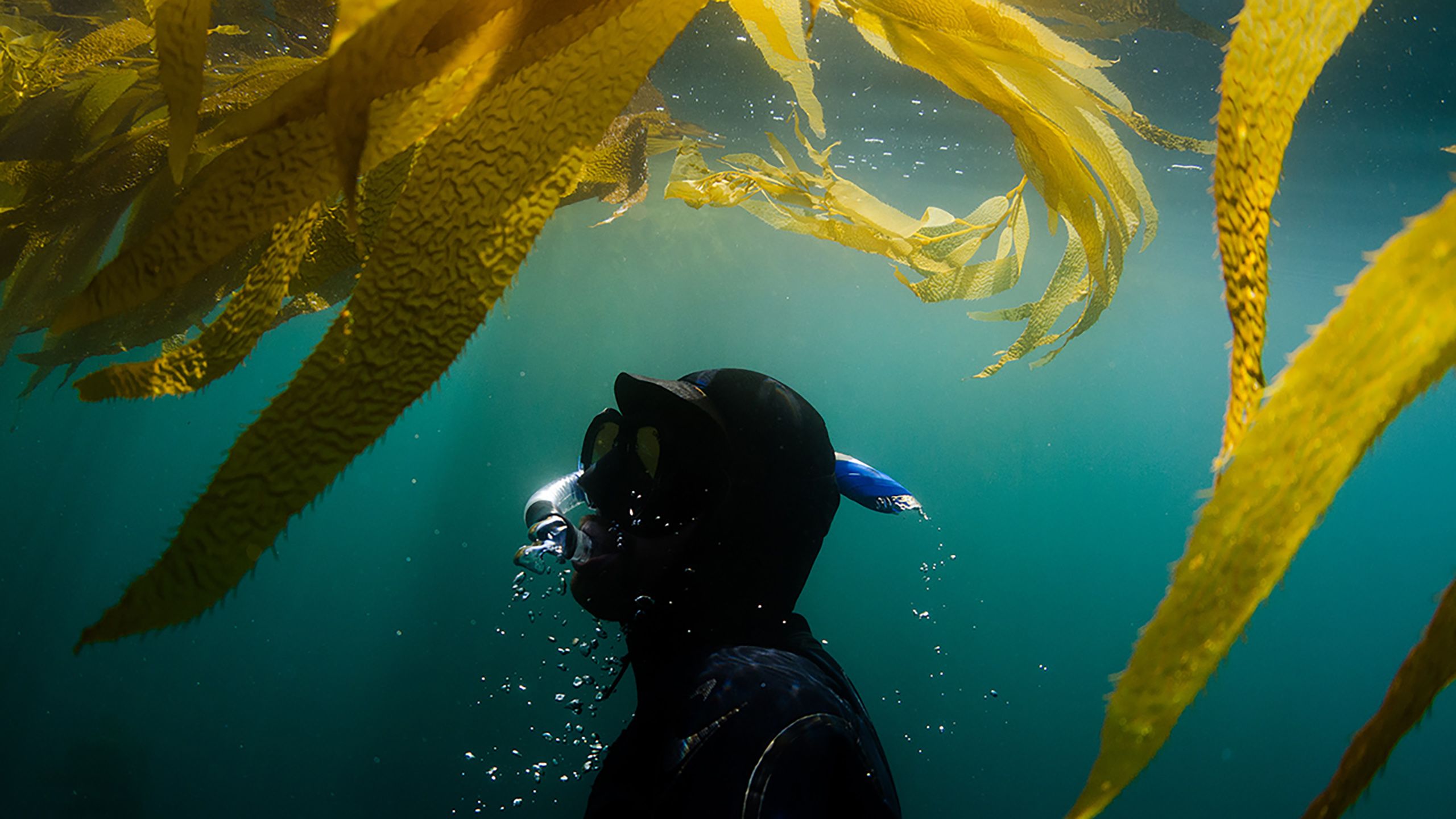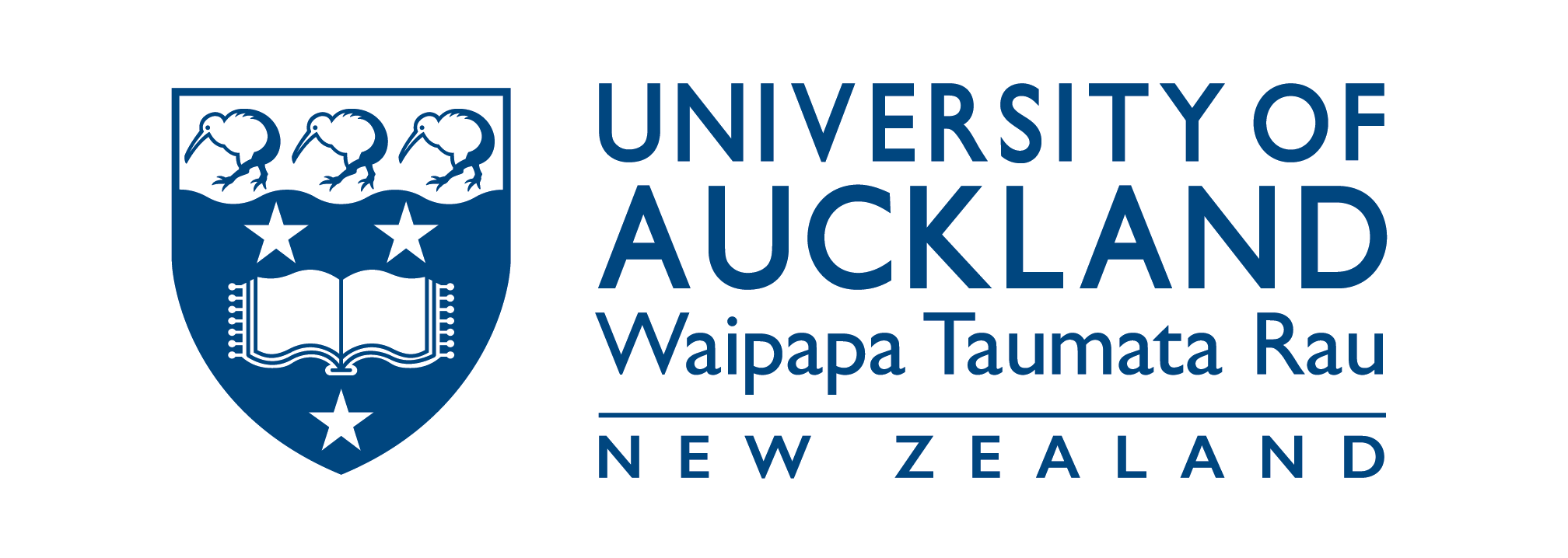Our hidden forests
How kelp can help address the carbon problem

Do answers to the challenge of rising carbon emissions lie beneath the surface of our oceans? Institute of Marine Science Research Fellow, Dr Caitlin Blain, has dedicated seven years of her career to researching seaweed and kelp forests.
After spending two and a half years in freezing Atlantic waters studying the impact of a seaweed called Desmarestia on biodiversity, she came to Aotearoa New Zealand, to complete her PhD.
Her work at the Leigh Marine Lab initially focused on the impact of anthropogenic stressors on kelp forest function and productivity, mainly coastal turbidity. This work led her to carbon sequestration.
“As kelp photosynthesise, they draw down carbon into their tissues to grow, and they’re kind of like these conveyor belts that keep growing and continually sloughing off tissue as they grow,” she says.
It’s a topic gaining wide attention, from government, community groups, and the private sector wanting ways to reduce carbon emissions.

Blain explains that despite being highly effective at processing carbon dioxide, kelp forests have typically been excluded from any estimates of blue carbon or climate mitigation schemes. While researchers are doing their best to keep up with industrial and government interest, a lot more work is needed to inform those initiatives.
Compared with terrestrial forests, where fallen leaves provide physical proof to account for carbon, it is much harder to identify what happens to carbon captured by kelp forests. This is because kelp grows on rock, so for the carbon to be sequestered, it has to be exported somewhere conducive.
So, her research looks at the different components of carbon as it is released from a kelp forest, where it might end up, and how long it might stay there. The hope is that scientists can provide measurable data to inform blue carbon budgets by unpacking this process.
She explains a lot of the existing literature is focused on tracing particulate organic carbon (POC). This is much more accessible because the particles are visible. In contrast, research on dissolved organic carbon (DOC) is not as well represented. The release of DOC is much harder to account for, but it’s a significant makeup of what’s released from the kelp and potentially longer lived.
Her research has returned promising results, indicating that DOC could be important to consider in the future. Some experiments have shown that as much as 40 percent of the carbon released from the kelp forests in the dissolved form is long-lived. She compares this to other research on particulate matter, including her work, which measured around 10 percent of the tissue staying as an organic carbon that can be sequestered.

Another concern is increasing turbidity caused by land runoff, particularly near cities and heavily developed coastlines, made worse by the recent storms and heavy rains. Shallow waters suffer more. As sediment clouds the water, it reduces the amount of sunlight that can reach the bottom. With reduced sunlight, the kelp’s ability to photosynthesise and grow is compromised.
The range of environmental stressors in the Hauraki Gulf need a range of targeted initiatives to curb damage. Blain suggests an example: fisheries management to reestablish sea urchin predator populations responsible for kelp forest degradation.
She says tree planting and better coastal infrastructure management in problem areas will also help reduce sediment runoff. By establishing a healthy ecosystem, the sea urchin population will return to a more manageable and natural level, allowing kelp forests to regenerate.
Blain also continues to collaborate with her PhD supervisor and mentor, Associate Professor Nick Shears, on aspects of kelp forest restoration, with ongoing work, alongside local iwi in the Hauraki Gulf/Te Moananui-ā-Toi and Queen CharlotteSound/Tōtaranui.
Blain is optimistic. “Our marine ecosystems can be incredibly resilient when not subjected to the constant pressures we place on them. With more knowledge and outreach, I am hopeful that more people will understand the value and vulnerability of our hidden forests.”
Caitlin Blain's research is funded by the Live Ocean Foundation (LOF), established by New Zealand sailing legends Peter Burling and Blair Tuke, to support marine scientists, innovators and communicators working to conserve and protect our oceans.



